Fast ways to go into labor
How to induce labor naturally
Around 38 weeks into their pregnancies, I start to see a shift in my expecting patients. The excitement of being pregnant has worn off. They are sore, uncomfortable and often feeling a great deal of pregnancy fatigue.
This is also usually when I start getting questions about natural ways to induce labor.
“Is it true that eating spicy food will get things going?” “Does drinking castor oil really work?”
Some of my expecting moms are willing to try just about anything at this point, and the internet provides endless ideas. However, I always caution that very few methods have been proven effective in getting labor started. And some methods can actually be dangerous for both mom and baby.
Here are six natural ways to induce labor that I get questions about from my patients, and the advice I share with them. I recommend that you first get your doctor’s permission before trying any of these methods as a way to induce labor.
1.
Walking and exercise often make it to the top of the list of things to try. While there’s no research that says it will induce labor, 30 minutes of moderate exercise at least five times a week can be helpful in any stage of pregnancy. And, it’s safe to use a birthing or exercise ball to stretch and help relieve some of the pressure in your pelvis, hips and back (unless you’ve been instructed otherwise by your doctor). Staying fit can help improve sleep and your mood. It can also decrease your risk of cesarean delivery and gestational diabetes.
2. Spicy foods
Spicy foods can make you sweat, but they won’t induce labor. That’s an old wives’ tale. Research has shown that eating spicy food can trigger heartburn and indigestion, but as for labor, there has been no documented research to prove this theory.
3. Sexual intercourse
You might be wondering “How would sex induce labor?” For starters, it can release oxytocin from the brain – the same chemical that causes contractions. And it can also release prostaglandins, which help the cervix naturally soften and prepare for labor. Be sure to ask your doctor whether you have the go-ahead to give sex at this time a try. If you’re given the okay, it’s certainly one of the more fun ways to try and get labor going.
And it can also release prostaglandins, which help the cervix naturally soften and prepare for labor. Be sure to ask your doctor whether you have the go-ahead to give sex at this time a try. If you’re given the okay, it’s certainly one of the more fun ways to try and get labor going.
4. Acupuncture and acupressure
Using acupuncture, acupressure or massage to induce labor is somewhat controversial. The belief is that stimulating certain pressure points in the body can release oxytocin and induce labor. While the effectiveness of this method is still up for debate, a foot massage is still enjoyable, especially at the end of pregnancy. And massage therapy can help treat the hip, back, ligament and musculoskeletal pain you might feel while pregnant. Both are very safe as long as the care professional has experience in taking care of pregnant women. Here at Park Nicollet, we’re lucky to have massage therapists specifically trained to work with pregnant women and their much more loose and relaxed muscles and joints.
5. Nipple stimulation to induce labor – discouraged
Some of my patients ask me whether using a breast pump can help start labor. Similar to sex, nipple stimulation can lead to oxytocin release. However, there is no research that shows using a breast pump to induce labor is safe or effective, so I discourage my patients from trying this method.
6. Castor oil to induce labor – highly discouraged and potentially dangerous
Castor oil can cause uterine contractions. But, the contractions may or may not be labor. The theory is that castor oil stimulates the bowels, which irritates the uterus and causes contractions. This can lead to side effects like diarrhea, nausea and vomiting – all of which can lead to dehydration. I highly discourage my patients from trying this method.
Be patient, and remember these methods for later
At the end of the day, your baby will come when they are ready. But once you’re in labor, some of the things listed above may actually help it progress. Walking, acupuncture, massage and more can also be used as natural ways to manage labor and delivery pains.
Walking, acupuncture, massage and more can also be used as natural ways to manage labor and delivery pains.
Until then, try to stay comfortable and be patient. And know that, if needed, your doctor can help you get your labor started safely and effectively.
7 Natural Ways to Induce Labor
7 Natural Ways to Induce LaborMedically reviewed by Meredith Wallis, MS, APRN, CNM, IBCLC — By Ashley Marcin on May 13, 2020
Your due date is an educated guess for when your baby might make its arrival.
While many women deliver perfectly healthy babies 2 weeks before or after this presumed due date, it’s recommended that women wait until at least 39 weeks for delivery.
It’s best to let mother nature decide when your baby comes.
In a 2011 study, 201 women who had recently delivered babies were surveyed about inducing labor at home. Of these women, 50 percent had tried a natural method of getting labor started.
If you’re 40 weeks in, here are seven natural ways to get things moving along.
Most of these methods are anecdotal and don’t have solid evidence that they work, so you should always talk to your healthcare provider before attempting any of these methods.
Your midwife or doctor may not be able to confirm that they work, but they can let you know if it’s safe to try with your pregnancy.
Exercise can be anything that gets the heart rate up, such as a long walk. Even if this method doesn’t work, it’s a great way to relieve stress and keep your body strong for the task ahead.
Theoretically, there are multiple reasons why having sex could induce labor.
For example, sexual activity, especially having an orgasm, can release oxytocin, which may help jumpstart uterine contractions.
Also, for pregnant people who have sex with men, there are prostaglandin hormones in semen that might help ripen the cervix.
Having sex is safe during the final weeks of pregnancy, but you shouldn’t have sex after your water has broken. Doing so can increase your risk for infection.
Stimulating your nipples can cause your uterus to contract and may bring about labor.
Nipple stimulations stimulate oxytocin production. Oxytocin is the hormone that causes the uterus to contract and the breast to eject milk.
In fact, if you choose to breastfeed your baby right after delivery, this same stimulation is what will help your uterus shrink back to its original size.
You or your partner may manually stimulate your nipples, or you can try using a breast pump.
Solidresearch shows that breast stimulation can be an effective way to:
- induce and augment labor
- avoid a medical induction
- reduce rates of postpartum hemorrhage
Acupuncture has been used for thousands of years. The exact way that acupuncture works is unclear.
In Chinese Medicine, it’s believed that it balances the chi or vital energy within the body. It might also stimulate changes in hormones or in the nervous system.
Acupuncture should be administered only by a licensed acupuncturist.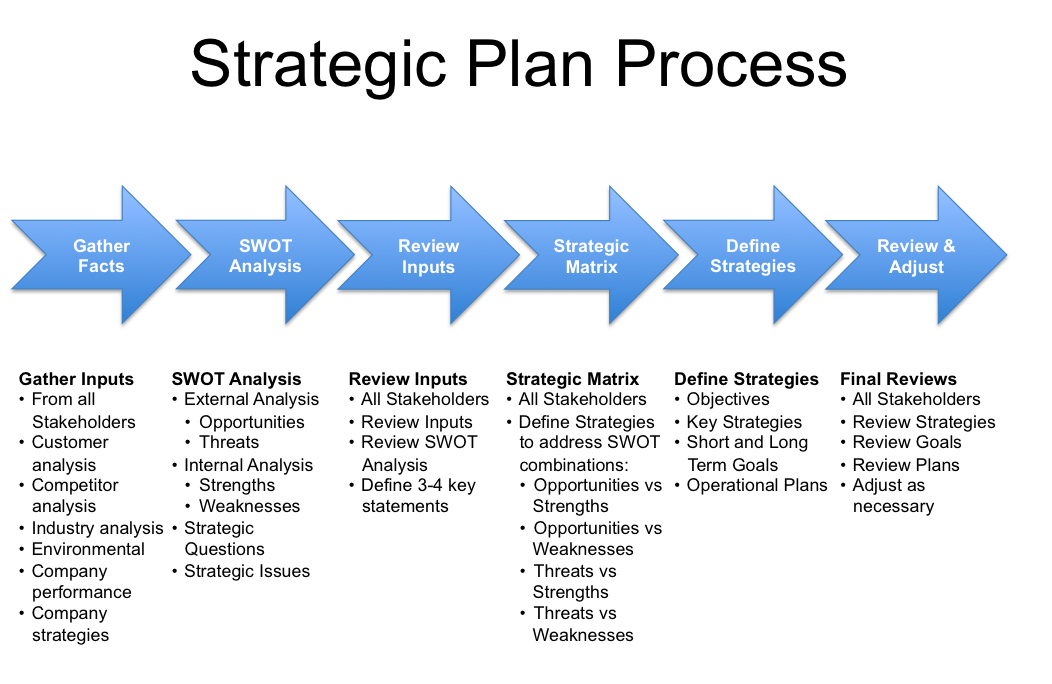
In a 2013 randomized trial in Denmark, more than 400 women were given acupuncture, membrane stripping, or both procedures before labor.
Study results showed that acupuncture didn’t decrease the need for induction, but sweeping membranes did.
According to research, the main benefit of acupuncture is increased cervical ripening.
Some practitioners believe that acupressure can help start labor. Prior to applying acupressure to yourself, make sure you get proper instruction from a trained acupressure professional.
If acupressure doesn’t get your labor going, it can still be an excellent way to alleviate pain and discomfort during labor.
Drinking a little bit, like only 1–2 ounces (29.57–59.14 mL) of castor oil stimulates prostaglandin release, which can help ripen the cervix and get labor started.
It’s recommended that this be done under the supervision of a midwife or doctor. People should be careful not to drink too much.
Someresearch shows that eating dates in the final weeks of pregnancy
- increases cervical ripening and cervical dilation at the start of labor
- decreases the need for Pitocin use during labor
Most pregnant people at 40 weeks are likely ready to have their babies out of their bellies as soon as possible and in their arms.
However, there are plenty of perks to waiting until your body naturally decides to go into labor — including recovery.
Women who weren’t induced typically recover more quickly than those who were. More time in the womb can mean both you and your new baby get to go home from the hospital sooner.
Infants who are born after a full-term pregnancy also experience other benefits. More time in the womb typically means:
- more time to build muscle and strength
- reduced risk of low blood sugar, infection, and jaundice
- improved breathing as infants born even as little as two weeks early can experience twice the number of complications
- better feeding once born
- increased brain development, with the brain growing a third of its size between weeks 35 and 40
Let your body do the work for a few more days and take the time to get as much rest as you possibly can.
We know, that’s easier said than done when you’re 9 months pregnant.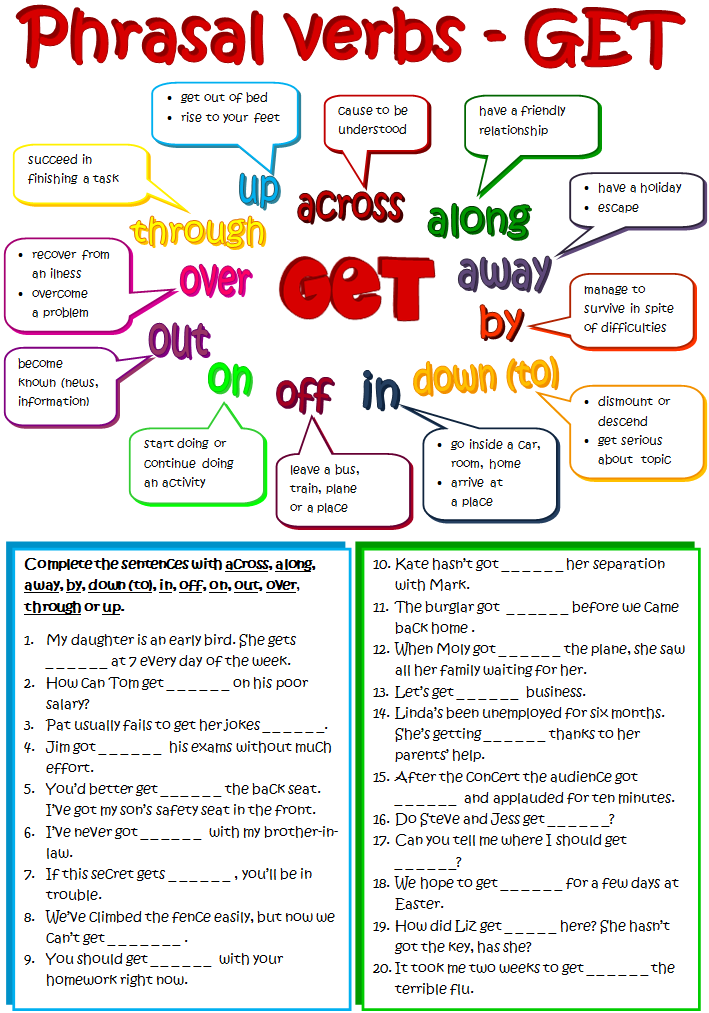 You and your baby will need all your energy soon enough!
You and your baby will need all your energy soon enough!
Before trying anything that might induce labor, speak with your healthcare provider to go over any risks or possible complications.
Though some of these methods are popular folklore among pregnant women, little scientific evidence supports their efficacy.
In most cases, it’s best to let baby set their own birth date, even if it means waiting another week or two.
Last medically reviewed on May 13, 2020
- Parenthood
- Pregnancy
- 3rd Trimester
How we reviewed this article:
Healthline has strict sourcing guidelines and relies on peer-reviewed studies, academic research institutions, and medical associations. We avoid using tertiary references. You can learn more about how we ensure our content is accurate and current by reading our editorial policy.
- Al-Kuran O, et al. (2011). The effect of late pregnancy consumption of date fruit on labour and delivery.

pubmed.ncbi.nlm.nih.gov/21280989/ - Anderson BB, et al. (2013). Acupuncture and/or sweeping of the fetal membranes before induction of labor: A prospective, randomized, controlled trial.
pubmed.ncbi.nlm.nih.gov/23612695/ - Chaudhry Z, et al. (2011). Women’s use of nonprescribed methods to induce labor: A brief report.
pubmed.ncbi.nlm.nih.gov/21599742/ - Demirel G, et al. (2015). The effect of uterine and nipple stimulation on induction with oxytocin and the labor process.
pubmed.ncbi.nlm.nih.gov/26444882/ - Gilad R, et al. (2012). 148: The CIC Trial–castor oil for induction of contractions in post-term pregnancies.
ajog.org/article/S0002-9378(11)01456-6/fulltext - Kavanagh J, et al. (2005). Breast stimulation for cervical ripening and induction of labour.
pubmed.ncbi.nlm.nih.gov/16034897/ - Kordi M, et al. (2014). The effect of late pregnancy consumption of date fruit on cervical ripening in nulliparous women.
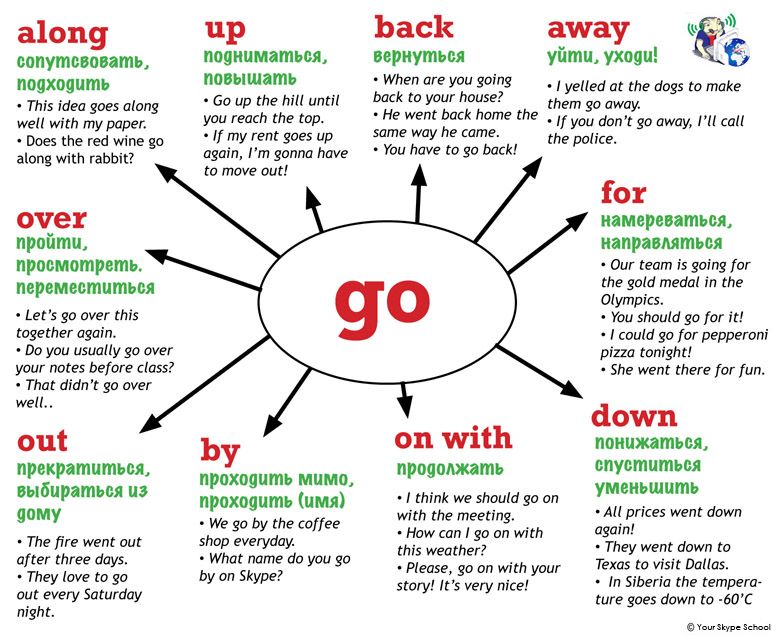 DOI:
DOI:
10.22038/jmrh.2014.2772 - Mayo Clinic Staff. (2020). Labor induction.
mayoclinic.org/tests-procedures/labor-induction/basics/what-you-can-expect/prc-20019032 - Mishanina E, et al. (2014). Use of labour induction and risk of cesarean delivery: A systematic review and meta-analysis. DOI:
10.1503/cmaj.130925 - Schlaeger JM, et al. (2017).
pubmed.ncbi.nlm.nih.gov/28002621/ - Smith CA, et al. (2013). Acupuncture for induction of labor.
pubmed.ncbi.nlm.nih.gov/23945980/ - Why at least 39 weeks is best for your baby. (2018).
marchofdimes.org/pregnancy/why-at-least-39-weeks-is-best-for-your-baby.aspx#
Our experts continually monitor the health and wellness space, and we update our articles when new information becomes available.
Current Version
May 13, 2020
Written By
Ashley Marcin
Edited By
John Bassham
Medically Reviewed By
Meredith Wallis, MS, APRN, CNM, IBCLC
Copy Edited By
Delores Smith-Johnson
Share this article
Medically reviewed by Meredith Wallis, MS, APRN, CNM, IBCLC — By Ashley Marcin on May 13, 2020
related stories
How to Start Labor Contractions Naturally
Inducing Labor Safely: How to Get Your Water to Break
How to Dilate Faster During Labor: Is It Possible?
How Nipple Stimulation Works to Induce Labor
When Labor Will Start if You're 1 Centimeter Dilated
Read this next
How to Start Labor Contractions Naturally
If you’ve gone past your due date, you might be anxious to meet your baby-to-be.
 Here are some natural ways to start contractions.
Here are some natural ways to start contractions.READ MORE
Inducing Labor Safely: How to Get Your Water to Break
Medically reviewed by Katie Mena, MD
If you’re past your due date, you’re likely anxious to bring your baby into the world. Here’s how to safely induce labor.
READ MORE
How to Dilate Faster During Labor: Is It Possible?
Medically reviewed by Michael Weber, MD
As you approach your due date and delivery, you might be wondering how to speed up the process. Here’s what you need to know about inducing labor and…
READ MORE
How Nipple Stimulation Works to Induce Labor
Medically reviewed by Meredith Wallis, MS, APRN, CNM, IBCLC
If you’re pregnant and past your due date, you might want to try nipple stimulation to get labor started.
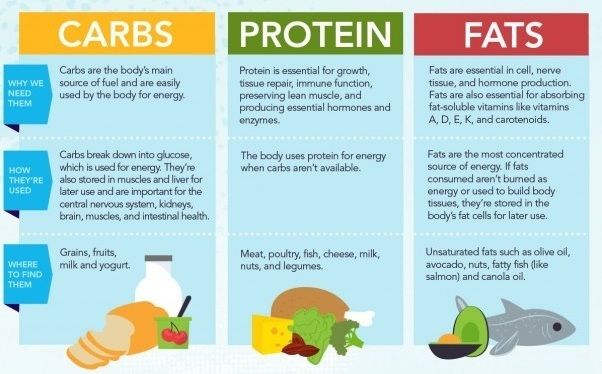 Here’s what you should know.
Here’s what you should know. READ MORE
When Labor Will Start if You're 1 Centimeter Dilated
Medically reviewed by Kimberly Dishman, MSN, WHNP-BC, RNC-OB
During late pregnancy, your doctor will check how you’re progressing. Here’s when you might go into labor if you’re 1 centimeter dilated.
READ MORE
Is Stretch and Sweep Safe for Inducing Labor?
Medically reviewed by Debra Sullivan, Ph.D., MSN, R.N., CNE, COI
If you’ve reached your due date or have gone past it, your doctor may recommend a stretch and sweep. Here’s what to expect from this procedure.
READ MORE
Is It Safe to Use Exercise to Induce Labor?
Medically reviewed by Michael Weber, MD
If you’re pregnant and past your due date, you might wonder if exercising will help induce labor.
 Here’s the truth.
Here’s the truth. READ MORE
Pregnancy Doctors and Birthing Options
Medically reviewed by Debra Rose Wilson, Ph.D., MSN, R.N., IBCLC, AHN-BC, CHT
When deciding on a birthing plan, it’s important to be aware of your options and to create a plan that fits your needs. Here we’ll explain the roles…
READ MORE
Have a Question About Labor and Delivery?
Medically reviewed by Janine Kelbach, RNC-OB
Get answers to common questions such as, who can be in the delivery room with you, the average length of delivery, and assisted birth methods.
READ MORE
Your Guide to a Pregnancy-Safe Skin Care Routine
When you're expecting, pregnancy-safe skin care can help ensure the health of you and your baby. We'll tell you what to avoid — and some good…
READ MORE
How to induce labor naturally
There are at least seven ways to induce labor that are supported by science. Let's take a look at each of these "evidence-based" methods.
Let's take a look at each of these "evidence-based" methods.
1. Sexual intercourse
Many women manage to induce natural childbirth through sex. This is because semen contains prostaglandins, the same hormone-like compounds found in cervical ripening drugs such as Cervidil. nine0003
The key to having sex for natural induction is not to do it once. With this natural method of labor induction, "3 times is the way to go." It is assumed that three ejaculations contain the same amount of prostaglandins as Cervidil.
Of course, at 40+ weeks of pregnancy, frequent sex is definitely not what the expectant mother dreams of, but it is definitely the best alternative to cervidil and pitocin, which can lead to more painful contractions and even rupture of the membranes or fetal distress. nine0003
2. Nipple stimulation
Nipple stimulation can actually help induce labor or hasten a stalled or slow labor. You should stimulate the entire breast, not just the nipples. Try a slow, rhythmic breast massage behind the areola.
You should stimulate the entire breast, not just the nipples. Try a slow, rhythmic breast massage behind the areola.
You can do this yourself or ask your partner to help you.
3. Evening Primrose Oil
Evening Primrose Oil contains prostaglandins that help prepare the cervix for childbirth. However, there is limited research on the efficacy and safety of evening primrose oil. Evening primrose oil can actually prolong labor by several hours when used vaginally. It can also cause early rupture of membranes, meaning your waters break before contractions begin. nine0003
Although many mothers claim that oil speeds up labor, there is still a risk, so it should be considered as a last resort.
4. Castor oil
Castor oil causes the intestines to contract, which can stimulate uterine contractions. But like evening primrose oil, this method should also be used with caution and only with the approval of your midwife or doctor.
Although many mothers have used it with great success and no other interventions. Yet it should be remembered that intestinal contractions cause terrible diarrhea. At best, this can be inconvenient; at worst, it can cause dehydration. If you and your birthing team decide to try this method, be sure to drink at least 500 ml of water to keep yourself hydrated and maintain healthy electrolyte levels. nine0003
5. Red raspberry leaf tea
Red raspberry leaf tea is a great way to tone the uterus during pregnancy and can also help induce labor.
Due to its stimulating effect, most midwives do not recommend drinking until the second trimester. For labor induction, increase the dose of this tea.
6. Eating dates
Research shows that eating dates during pregnancy helps women achieve greater cervical dilation, intact membranes, and more spontaneous labor when the time comes for delivery. Oxytocin use was significantly lower in women who consumed dates, and the average duration of the first stage of labor was shorter in women who consumed dates. As the study concludes, "dating dates during the last 4 weeks before delivery significantly reduced the need for labor induction and induction and resulted in more favorable labor." nine0003
As the study concludes, "dating dates during the last 4 weeks before delivery significantly reduced the need for labor induction and induction and resulted in more favorable labor." nine0003
What else can help induce labor?
While not backed by science, many moms claim these natural or "anecdotal" ways to induce labor.
1. Pamper yourself
Pamper yourself is a great way to relax and focus before having a baby. Sure, prenatal massage is great, but you might want to focus on the feet, which have special trigger points that can induce labor. A foot massage, reflexology, or even just a pedicure can be rewarding and definitely an enjoyable pastime. nine0003
2. Guided Relaxation
Soothing affirmations, guided meditation, and deep breathing can do wonders to help your body relax and prepare to welcome your baby. Fearful thoughts and anxiety can lead to the release of adrenaline and other stress hormones that stop the birth process.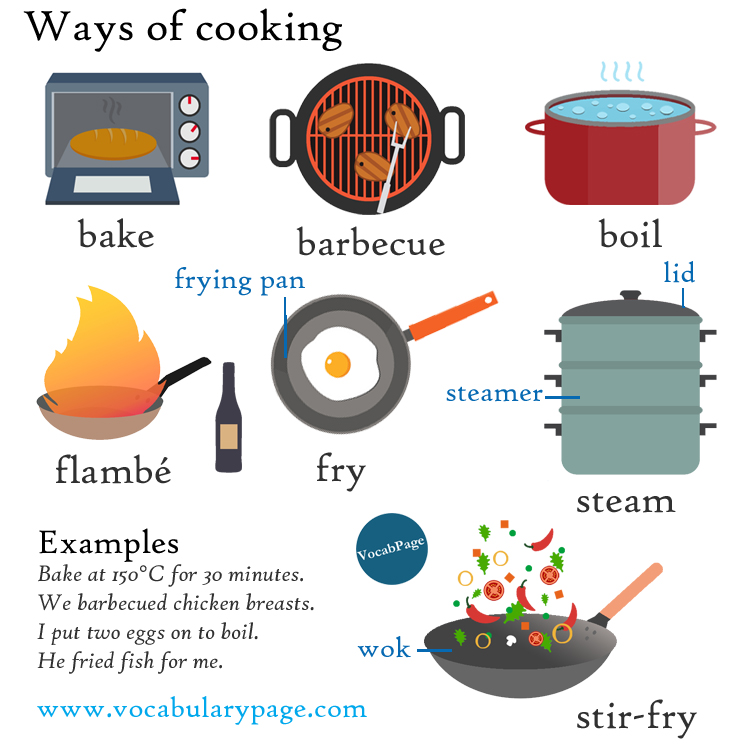
It is interesting that before giving birth, cats go to a dark, quiet place. Darkness helps bypass stress hormones and increases levels of melatonin, a key hormone that can help trigger hormonal cascades. You can try this by turning off the lights, closing your eyes and focusing on your body and the amazing feat you are about to accomplish. nine0003
3. Nutrition
Follow your ideal pregnancy diet and remember to drink water. Childbirth is hard work and you will need all the support you can get. Although nutrition may not stimulate labor, it will definitely help you feel strong, prepared, and calm when labor actually begins.
4. Exercise
Moderate exercise is fantastic throughout pregnancy, and some women have been lucky enough to induce labor by walking, cycling, swimming, or other exercise. By moving our body, we can help the baby into its birth position and open up our pelvis for a faster delivery.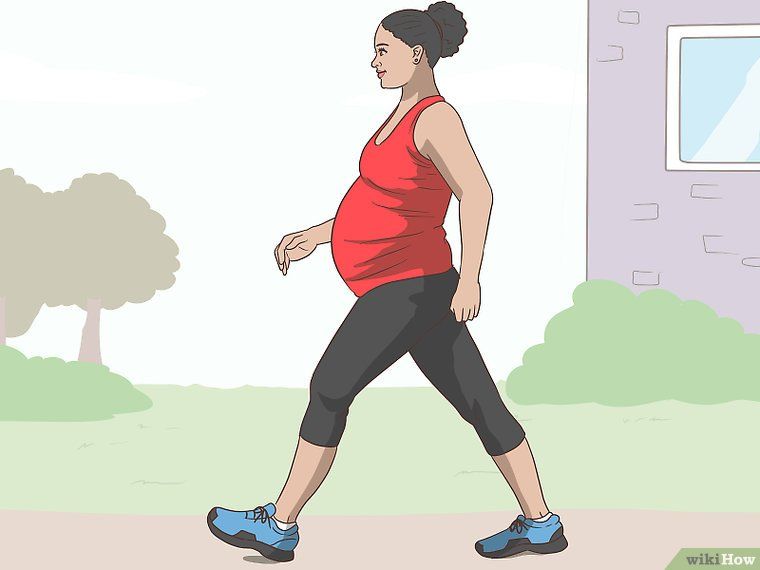 However, the main thing is not to overdo it. You don't want to be tired when labor starts. nine0003
However, the main thing is not to overdo it. You don't want to be tired when labor starts. nine0003
5. Acupuncture, acupressure and chiropractic
In addition to mental readiness, you and your child need to be physically ready, and acupuncture, acupressure and chiropractic can help with this. Acupuncture is a potentially useful way to induce labor, but there isn't a lot of solid research on this topic. However, acupuncture and acupressure have been used for many years to induce labor and are trusted by many women.
The idea of acupressure is that acupuncture and acupressure help to unblock any stagnant energy, which can help the child to get into the correct position. Specifically, acupuncture points for inducing labor are found on the feet, arms, and back. They stimulate the thyroid, digestive and reproductive systems. nine0003
Chiropractic induction methods are based on the same idea. Opening and balancing the pelvis with chiropractic helps your baby get into the correct, deep position and stimulates your body for labor.
Find a suitable pregnancy acupuncturist or contact a local mums group for recommendations.
6. Pineapple
The bromelain in pineapple and other tropical fruits is said to induce labor by stimulating the uterus. On the other hand, it may just be the stimulation of the intestines from eating a large amount of pineapple, which causes labor. Either way, it's a delightful way to induce labor naturally. nine0003
7. Spicy food
Some mothers use spicy food to induce labor. Like castor oil, spicy foods stimulate the intestines. Keep in mind that spicy foods can cause stomach upset, a side effect that is best avoided during childbirth.
8. Eggplant Parmesan
Scalinis Restaurant near Atlanta, Georgia, claims to have helped more than 300 women go into labor within 48 hours with its famous eggplant parmesan. Don't live near a restaurant? Dish you can try at home:
Ingredients:
3 medium eggplants
0. 5 cup flour
5 cup flour
6 eggs, beaten
2 cups Italian breadcrumbs
1L cups marinara sauce
1/2 cup grated romano cheese
1/2 cup grated parmesan cheese
200 gr mozzarella cheese, grated
2 cups ricotta cheese
How to cook:
After washing the eggplants, cut them into slices.
Lay the eggplant slices on a layer of paper towels and sprinkle with a little salt, then cover with another layer of paper towels and press down with something heavy. This will remove excess moisture. Let them sit for about an hour. nine0013 Working with one eggplant slice at a time, dust it with flour, then dip in beaten eggs, then coat well in breadcrumbs. Fry in hot olive oil on both sides until golden brown.
In a baking dish, alternate layers of marinara sauce, eggplant slices, ricotta, Parmesan, and Romano cheese until the baking dish is filled. Sprinkle with grated mozzarella cheese and bake for 25 minutes at 375°C. Let stand 10 minutes before serving. nine0013 Note. For a gluten-free option, use chickpea or buckwheat flour in place of flour and almond flour or semolina in place of breadcrumbs.
nine0013 Note. For a gluten-free option, use chickpea or buckwheat flour in place of flour and almond flour or semolina in place of breadcrumbs.
9. Homeopathic remedies
Homeopathic remedies are generally considered safe during pregnancy. Common homeopathic remedies used to induce labor include Pulsatilla 200C, Caullophyllum 200C, and Cimicifuga 200C. Some midwives recommend alternating all three times every three days until labor begins. Consult your gynecologist for dosage. nine0003
For more information on homeopathic remedies during pregnancy and childbirth, read Homeopathic Medicines for Pregnancy and Childbirth by Richard Moskowitz and Homeopathy for Pregnancy, Childbirth and Your Baby's First Year by Miranda Castro.
10. Special Exercises
This chart helps misplaced babies get into the ideal birthing position, which puts pressure on the cervix and stimulates labor.
This simple procedure has three parts, including:
1, Start in cat/cow pose with knees wide apart, then lower chest as low as possible and buttocks as high as possible.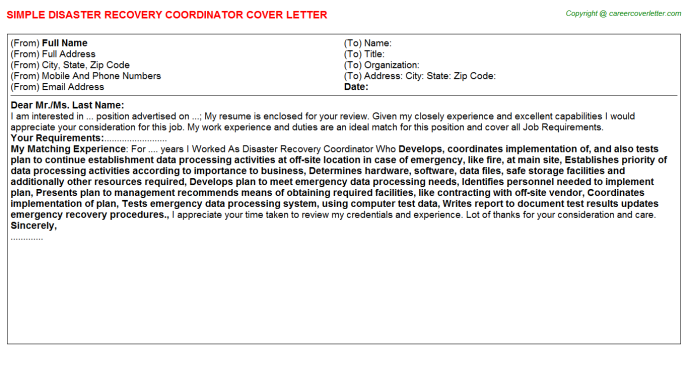 Swing while maintaining this position for 30 minutes. This helps the baby come out of the pelvis a little, giving him the opportunity to rotate and change the position of the head.
Swing while maintaining this position for 30 minutes. This helps the baby come out of the pelvis a little, giving him the opportunity to rotate and change the position of the head.
2. Roll onto your left side, straighten your bottom leg, then lift your top leg as high as you can. Roll forward using pillows for support. Maintain this position for 30 minutes. nine0013 Do your best to move for at least 30 minutes. Lunges, walking up and down stairs in twos, sideways, sitting on a birth ball, and hula hoops are especially helpful because they put your pelvis in an asymmetrical position.
Which food induces labor?
As noted above, when it comes to food to induce labor, dates are the best choice. Research shows that dates reduce the need for induction and shorten labor. Pineapple and spicy foods can also help induce labor, although there isn't much evidence to support these theories, only a lot of anecdotal evidence. nine0003
How long does it take to have a baby after induction?
As with most aspects of childbirth, there is no hard and fast rule. Every woman is different: for some mothers, induction of labor can take only a few hours, for others it can take several days. And sometimes induction doesn't work at all.
Every woman is different: for some mothers, induction of labor can take only a few hours, for others it can take several days. And sometimes induction doesn't work at all.
Why does induction cause more pain?
Our body naturally produces oxytocin, a hormone that stimulates contractions. During induction, a woman is usually given a synthetic form of oxytocin, such as pitocin, to speed up contractions. This can cause labor to start too quickly, resulting in stronger and more intimate contractions. nine0003
What are the risks of induction?
The risks of induction vary depending on the method of induction, but the biggest risk is that the induction will fail. In 25% of cases, induction failed - this may mean that the mother is in labor for a long time, but a caesarean section may be required eventually. It can be physically taxing and emotionally draining for a mom.
Other risks include:
Low fetal heart rate: The strong, frequent contractions caused by pitocin may cause discomfort to the baby.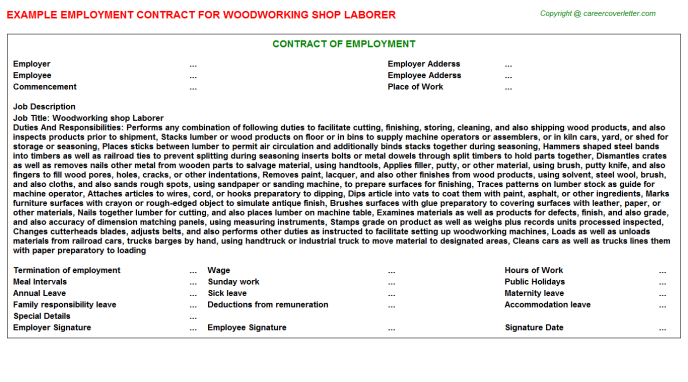 nine0013 Uterine rupture: The strong, frequent contractions caused by Pitocin can cause the uterus to rupture. This is most common in mothers who have previously had uterine surgery.
nine0013 Uterine rupture: The strong, frequent contractions caused by Pitocin can cause the uterus to rupture. This is most common in mothers who have previously had uterine surgery.
Excessive bleeding in the mother after childbirth: When stimulated, the uterus may not contract properly after childbirth.
Infection: Rupture of membranes can put mother and baby at increased risk of infection.
What if I miss my due date? Should I induce labor?
Absolutely not! You have the right to refuse anything that does not suit you, including induction of labor. nine0003
At 40 weeks gestation, there is no evidence that induction is necessary in a normal healthy pregnancy. Remember that your due date is determined by a number of factors, including the average length of pregnancies in your family, the accuracy of your due date calculation, and your individual child. Your baby and body are the ones who initiate labor and usually know when they are ready.
If you have passed 41 weeks of pregnancy
There is no reason to consider induction in a normal healthy pregnancy before 41 weeks, and you may want to wait even longer before trying any of these methods.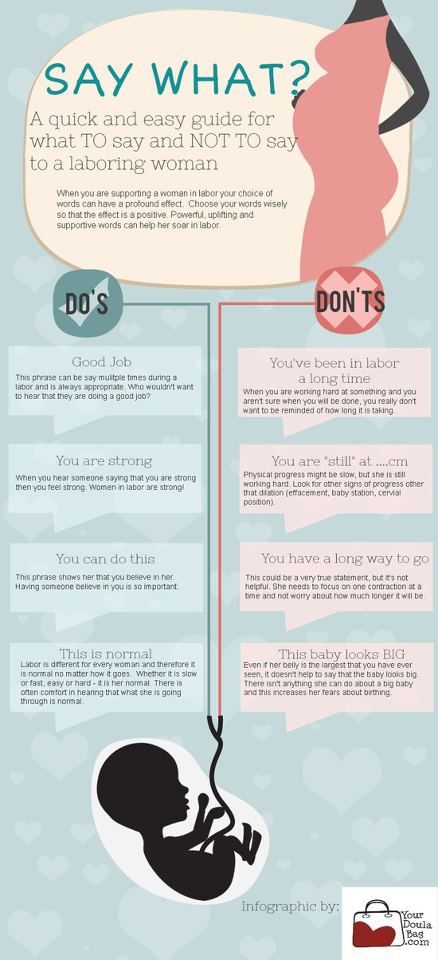 If you choose to go through 41 weeks without trying to induce labor, your healthcare provider will likely keep a close eye on you. nine0003
If you choose to go through 41 weeks without trying to induce labor, your healthcare provider will likely keep a close eye on you. nine0003
If you have passed 42 weeks of pregnancy
Natural induction of labor is still a priority and may increase the likelihood of other labor interventions. If mom and baby are healthy, it is perfectly reasonable and scientifically justified to give birth at 42 weeks.
How did other mothers induce labor?
I asked moms on my Facebook page about ways to induce labor naturally. Here are some of their responses:
- My water broke but my contractions didn't start. That night I went for acupuncture and two hours later I had a nice steady contraction rhythm! — Jill B.
- Massage of painful points, sex, walks. — Norma O.
- I massaged the pressure points on my feet and around my ankles that are supposed to induce labor. That night I went into labor, that is, a week before the expected date of delivery! I also started drinking 1 cup of red raspberry leaf tea a day at 32 weeks pregnant and gradually increased it to 4 cups by the time I was due.
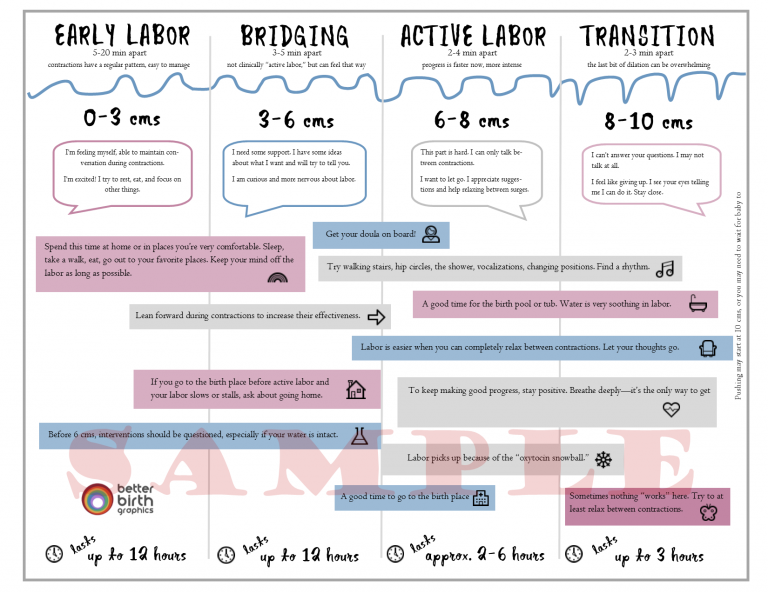 — Jennifer B.
— Jennifer B. - A friend told me that she had read that pineapple can induce labor. Without thinking, the next day I ate almost a whole pineapple. That night I went into labor, a week early. — Stephanie N.
- With both of my kids, I've tried everything - spicy food, pineapple, even scrubbing floors/lunges vigorously. But both times the trick was to have sex with my husband and make him ejaculate inside me. I went into labor less than 12 hours after two times. — Lisa S.
- The first child was "delayed" for 3 days, so I stimulated naturally with evening primrose oil (oral and vaginal) and castor oil. That day, I started having contractions! — Sarah L.
- Acupuncture! I came in with very weak, irregular contractions and left with active labour, intense contractions 6 minutes apart. She gave birth 10 hours later. — Sherry M.
- I worked every day of both my births (throughout all pregnancies). I also had sex. — Susan B.
- Acupuncture, chiropractor and pumping (nipple stimulation).
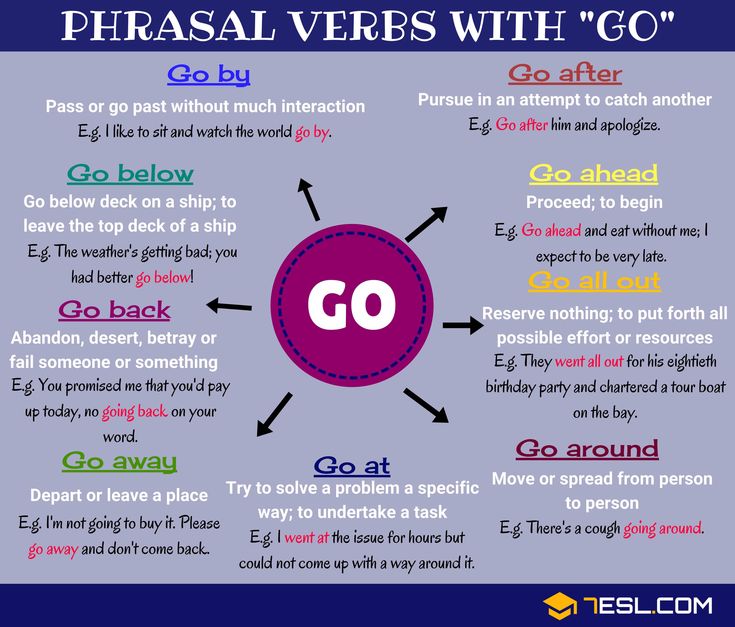 — Angela G.
— Angela G.
Original - here
The most effective way to induce contractions and speed up labor
HealthChildbirth
First of all, do not forget that any pregnancy is individual. Even for one woman with several children, the scenario of each new pregnancy can be completely different from the previous one. Do not forget that the preliminary date of birth (DA) does not guarantee the appearance of the baby on a particular day. But do not panic ahead of time - you will not remain pregnant in any case.
It is important to know that all the methods discussed below can only be tested if your tests are normal, there are no pathologies, and the doctor observing the pregnancy has no objections. Think also about whether you really need to compete with nature and, in principle, take measures that bring the cherished day closer? nine0003
- Photo
- Getty Images/Hero Images
Let's breastfeed
There is a test that reveals the readiness of the whole organism in general and the uterus in particular for childbirth - mammary. Its essence is to stimulate the nipples, which triggers the production of the hormone oxytocin, which, in turn, provokes contractions. Within three minutes after the start, the first training session should happen, and after 10 minutes - three more. Did the diagram fit? Then childbirth is worth waiting for from day to day. Only if the reaction does not occur, we can say that you are "walking". By the way, breastfeeding is also useful for this reason: the uterus will actively contract, which is extremely important in the postpartum period. nine0003
Its essence is to stimulate the nipples, which triggers the production of the hormone oxytocin, which, in turn, provokes contractions. Within three minutes after the start, the first training session should happen, and after 10 minutes - three more. Did the diagram fit? Then childbirth is worth waiting for from day to day. Only if the reaction does not occur, we can say that you are "walking". By the way, breastfeeding is also useful for this reason: the uterus will actively contract, which is extremely important in the postpartum period. nine0003
Hands to hips, legs wider!
Physical activity is also among the top recommendations for speeding up labor, and for good reason. Walking up the stairs, long walks, sometimes even squats - it’s not without reason that women at the end of pregnancy often feel a surge of strength and energy, so nature has taken care of everything here. However, it is important not to overdo it, the consequences of indefatigable activity can be the most deplorable - for example, placental abruption.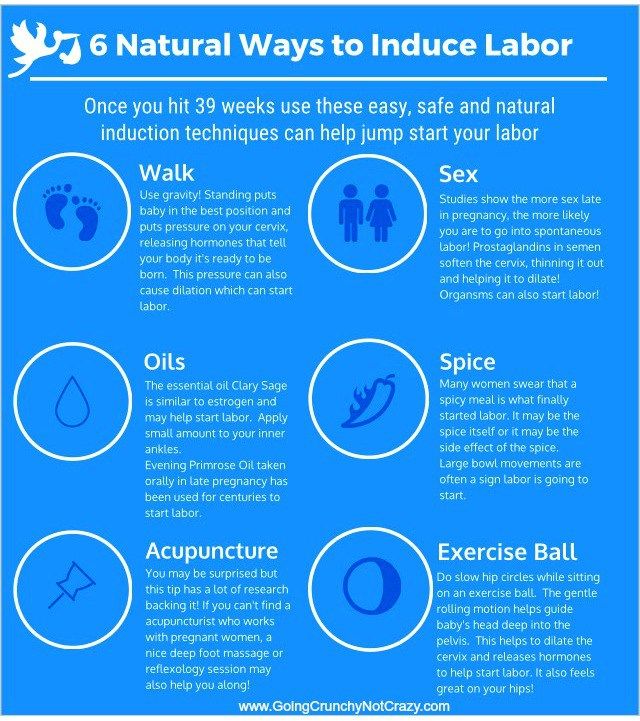 If you are not in the hospital, and the doctor did not recommend complete rest, the method can be used. nine0003
If you are not in the hospital, and the doctor did not recommend complete rest, the method can be used. nine0003
Relax… completely
Colon cleansing with enemas and microclysters is another harmless, effective way to induce contractions and call your baby out: intestinal peristalsis triggers contractions. But there is a more pleasant way to start the process: to revise the diet to include more vegetables, fruits and grains. Of course, nutrition alone is unlikely to provoke childbirth, but it may well bring them closer. In addition, the right diet will definitely save you from constipation, which often torment women in the last stages. nine0003
- Photo
- Getty Images/Tetra images RF
Remember how it all began
Love each other and have sex. This way to induce labor will be one of the first to be offered by both doctors and thousands of women whom he has helped. Not only is this a pleasant activity in itself, it can contribute to the onset of labor for three reasons.
Not only is this a pleasant activity in itself, it can contribute to the onset of labor for three reasons.
Firstly, sex is nothing but physical activity. Secondly, orgasm causes a rush of blood to the uterus. And thirdly, semen contains biologically active substances prostaglandins, which soften the cervix and prepare it for labor. nine0003
This method has contraindications. You need to be one hundred percent sure of your partner's health and the absence of infections. In case the mucus plug has already moved away, there will be no barrier in their way. In addition, the method is not suitable for those who have a low placenta or placenta previa.
What else?
Harmless stimulation methods include:
-
foot and lumbosacral massage;
-
certain foods and drinks: raspberry leaf tea (note: raspberry leaves should not be taken before 8 months as they stimulate uterine contractions), redcurrant or beetroot juice, spicy foods, fresh pineapple, parsley; nine0003
-
warm bath or contrast shower.
 By adding essential oils to the water that increase the tone of the uterus (basil, chamomile, juniper, etc.), you can cause it to contract.
By adding essential oils to the water that increase the tone of the uterus (basil, chamomile, juniper, etc.), you can cause it to contract.
What not to do:
-
take labor inducing drugs unless prescribed by your doctor;
-
perform any procedure alone;
-
try to induce labor prematurely;
-
uncontrollably try folk ways; nine0003
-
ignore the advice of your doctor.
Obstetrician-gynecologist
Births that occur between 37 and 40 weeks are considered normal, and the reasons for walking are always individual. It is important during this period to monitor the condition of the child. Is the baby getting worse? Then the question of childbirth comes up. We recommend actively stimulating labor activity only in a hospital setting, when doctors have the opportunity to monitor the opening of the cervix, the baby's heartbeat and its location, as well as the general condition of the mother.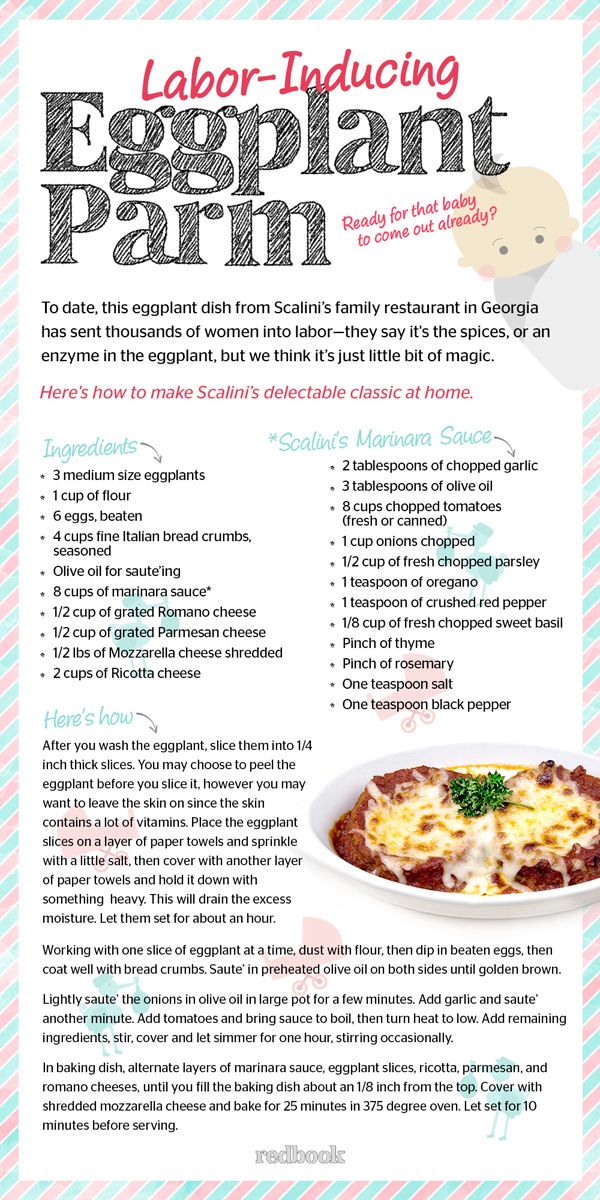 How to calculate the PDR? From the date of the first day of the last menstruation, subtract three months and add seven days. For example, if the critical days began on August 1, then the DA starts on May 8. nine0003
How to calculate the PDR? From the date of the first day of the last menstruation, subtract three months and add seven days. For example, if the critical days began on August 1, then the DA starts on May 8. nine0003
As for the natural ways to speed up the birth, one should not seriously count on their effectiveness. Some of them are more effective, some less. Warm baths with herbs, in my opinion, are just a pleasant procedure. The skin for the body as a protective barrier is impenetrable from the outside, so even if we add oils or herbs to the water, this is unlikely to affect labor activity. For the absorption of substances through the skin, there is a special physiotherapy - phonophoresis.
But sex can really lead to contractions, as well as intestinal irritation. But if the mother's body and the child are not yet ready for a responsible event, then neither a diet nor an enema will be able to provoke childbirth. nine0003
The last thing a child needs is a restless and worried mother.












